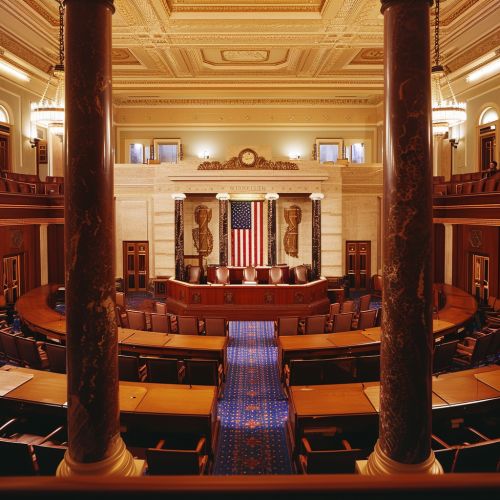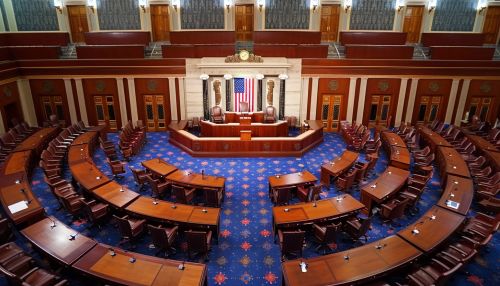United States Senate
Overview
The United States Senate is one of the two chambers of the United States Congress, the other being the House of Representatives. The Senate chamber is located in the north wing of the United States Capitol in Washington, D.C. The composition and powers of the Senate are established by Article One of the United States Constitution. The Senate is composed of senators, each of whom represents a single state in its entirety. Each state, regardless of its population size, is equally represented by two senators who serve staggered terms of six years. There being at present 50 states in the Union, there are currently 100 senators.


History
The United States Senate was established by the United States Constitution in 1789. The Founding Fathers intended the Senate to serve as a stabilizing influence to protect the rights of the states and prevent potential abuses of majority power in the House of Representatives. Over the years, the Senate has evolved into a complex legislative body with unique rules and traditions.
Powers and functions
The Senate has several exclusive powers not granted to the House, including consenting to treaties as a precondition to their ratification and consenting to or confirming appointments of Cabinet secretaries, federal judges, other federal executive officials, military officers, regulatory officials, ambassadors, and other federal uniformed officers, as well as trial of federal officials impeached by the House.
Membership
Each U.S. state is represented by two senators, regardless of population. Senators serve staggered six-year terms. The terms are staggered so that approximately one-third of the seats are up for election every two years. This serves to maintain continuity in the Senate.
Leadership
The Vice President of the United States serves as President of the Senate and may cast the decisive vote in the event of a tie in the Senate. The Senate also has a President pro tempore, who presides over the Senate in the Vice President's absence. The President pro tempore is elected by the Senate and is, by custom, the senator of the majority party with the longest record of continuous service.
Committees
The Senate uses committees and their subcommittees for a variety of purposes, including the review of bills and the oversight of the executive branch. The appointment of committee members is formally made by the whole Senate, but the choice of members is actually made by the political parties.
Procedures
The Senate maintains a set of standing rules, customs, and traditions to guide it in its legislative, but not its procedural, powers. The Senate's legislative powers are exercised through the legislative process, which consists of a series of steps that the Senate takes to enact legislation.
